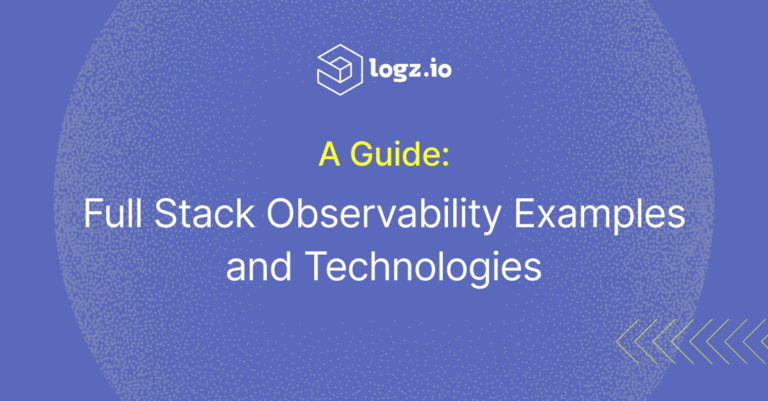
How an APM Alternative Helps You Do Observability Right
April 3, 2024
Every software-driven business strives for optimum performance and user experience. Observability—which allows engineering and IT Ops teams to understand the internal state of their cloud applications and infrastructure based on available telemetry data —has emerged as a crucial practice to help engage this process.
For years, application performance monitoring (APM) was the de facto practice and tooling that organizations have used to keep tabs on their critical systems. However, as technology has evolved — specifically within the context of cloud applications — so have the needs and challenges of observing these modern architectures. Thus, exploring alternatives to traditional APM has become imperative for staying ahead in the game.
As such, organizations should consider the emerging application observability approach within the realm of proven APM alternatives. But what exactly makes an APM alternative viable, and how does this changing mindset help businesses do observability right?
Understanding the Limitations of APM
Before delving into alternatives, it’s essential to understand the limitations of traditional APM solutions. While APM tools excel at monitoring application performance metrics like response time, throughput, and error rates, they often fall short in providing comprehensive insights into the entire system’s health.
To that end, they typically lack visibility into infrastructure components beyond the application layer, such as databases, networks, and third-party services, which are clearly critical to understanding overall performance and pinpointing potential issues. This limitation hampers the holistic understanding required for effective monitoring and troubleshooting.
Another key shortcoming of APM is its relatively backward-looking approach in terms of alerting on system performance issues. By invoking threshold-based alerting on matters such as CPU, operating system or database health, organizations tend only to isolate problems once they are already impacting performance.
Finally, APM platforms are work intensive and costly to operate, requiring significant time to deploy and generating massive bills for users, especially as data volumes increase over time.
Application Observability: The Rise of an APM Alternative
Observability stands as a dramatic alternative to traditional APM solutions and processes, directly addressing these shortcomings by offering a more holistic and efficient approach.
Instead of focusing solely on application-centric metrics, observability practices and platforms provide broader, real-time visibility into the entire stack, including complex cloud infrastructure, microservices, and containers.
By leveraging more advanced monitoring techniques such as distributed tracing, metrics correlation and log aggregation, backed by simple data collection, unified dashboarding and targeted AI, these compelling APM alternatives empower businesses to gain far deeper insights into system behavior and performance across their ephemeral modern environments.
Benefits of Embracing an APM Alternative
There’s quite a bit of benefit organizations can realize when they tap into the power of observability as an APM alternative. Among the many factors you should consider are benefits including:
Comprehensive Visibility: Unlike traditional APM tools, which provide limited visibility into specific layers of the stack, observability offers comprehensive visibility across the entire infrastructure stack. This holistic, unified view enables businesses to identify and resolve issues more effectively, leading to improved system reliability and performance.
Scalability and Flexibility: With the proliferation of microservices architectures and cloud-native technologies, scalability and flexibility are paramount. APM alternatives are designed to scale effortlessly with dynamic environments, providing real-time insights into rapidly changing systems without compromising performance.
Faster Root Cause Analysis: By correlating logs, metrics and traces across the entire stack, observability streamlines the process of root cause analysis. Instead of manually piecing together disparate data points from multiple sources, teams can quickly pinpoint the underlying cause of issues and take proactive measures to mitigate them.
Cost Efficiency: Traditional APM solutions can be costly to deploy and maintain, especially in large-scale environments. As an APM alternative, observability offers far more cost-effective pricing, making observability platforms more accessible to businesses of all sizes without sacrificing functionality or performance.
How Logz.io’s App 360 Solution Can Be Your APM Alternative
At Logz.io, we believe that our Open 360™ platform provides the best possible observability experience as an APM alternative that meets the needs of our customers across the full spectrum of today’s requirements.
Beyond correlated analysis of log, metric and trace data, we’ve developed a huge range of capabilities that support complex cloud native environments dependent on microservices and Kubernetes infrastructure. That notably includes App 360, an APM alternative purpose-built to deliver simple to use and cost effective application observability.
App 360 unifies distributed tracing, service topology and services analysis to provide full visibility into application health and performance, backed by targeted AI to speed troubleshooting and drive down costly data consumption. App 360 is exceptionally easy to use, with Logz.io’s OpenTelemetry-based Telemetry Collector enabling automatic service discovery, instrumentation and data collection for logs, metrics, and traces.
Another unique aspect of App 360 is the focused Anomaly Detection capability that we’ve added into it. This provides the targeted analysis that engineering and ops teams — or anyone responsible for oversight of specific applications services — need to ensure they are automatically alerted whenever their most critical, business-impacting services and microservices fall outside expected parameters.
We view App 360 as a uniquely powerful, observability-centric alternative to traditional APM, from data collection all the way to storage and pricing. It’s a more real-time, dynamic solution, based on its inherent abilities to unearth “unknown, unknown” applications issues traditional parameter-based analysis might overlook.
If you’d like to see how App 360 can help meet your needs as an APM alternative, sign up for a free trial today of Logz.io Open 360.




